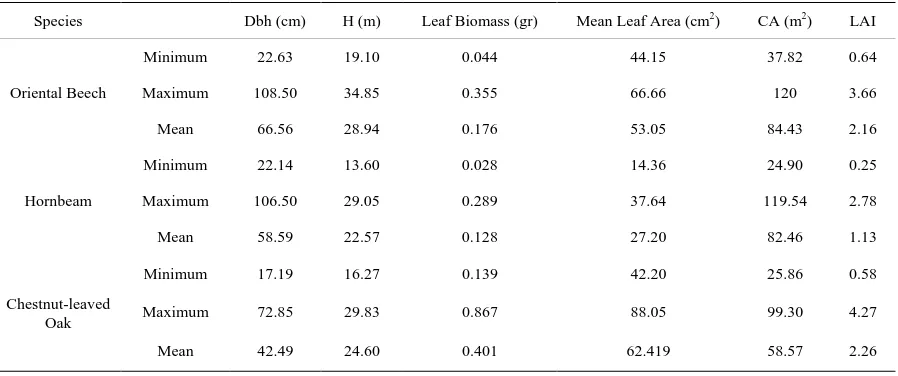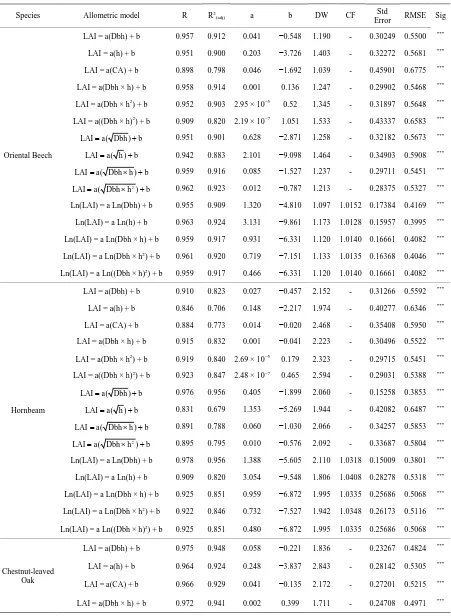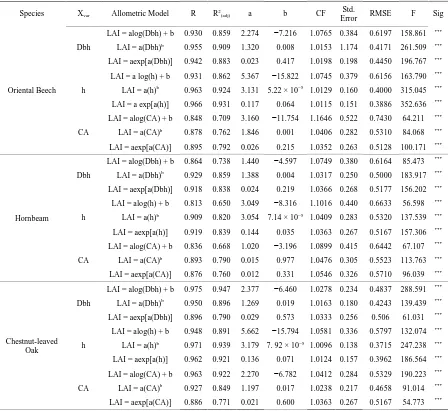LAI and Leaf Biomass Allometric Equations for Three Common Tree Species in a Hyrcanian Temperate Forest
Full text
Figure




Related documents
In this situation, we discard completely un-annotated proteins from our test dataset and use leave-one-out method to evaluate predictions performed by both
Promoting a collaborative approach, the Offi ce of the Nursing and Midwifery Services Director (ONMSD) and the Offi ce of the Assistant National Director of Mental Health
In practice, there are differences in the autonomy granted at the level of the profession as a whole, as well as differences between pro- fessions in their members’ opportunity to
It is difficult for designers, customers and end-users (representing the different stakeholders, each suffering from their symmetry of ignorance) of these systems to
The authors show how the company successfully initiated a program to train super users (Kaasbøll & Øgrim, 1994) in conjunction with introducing a new software
The paper concludes to the proposal of an Integrated Risk Management System (IRMS) plan based on a) auditing of a weighted matrix of 20 Critical Core Elements
The composition of the index captures a significant share (86 per cent) of Canada’s international trade vol- ume and better reflects Canada’s trade profile than the C–6, which